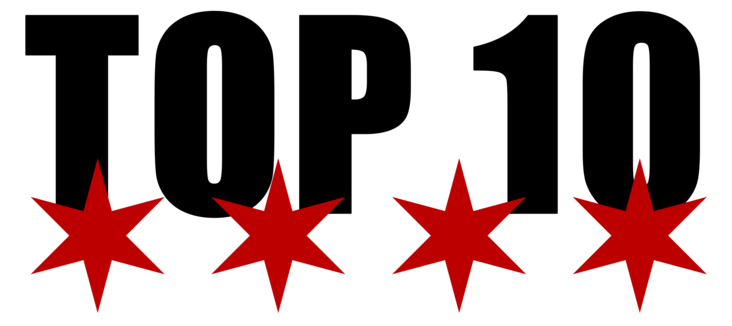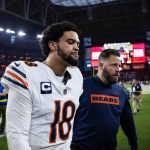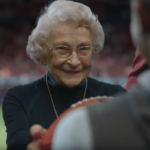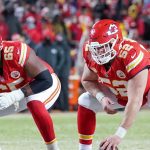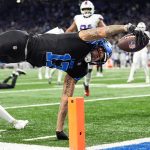The scouting combine has arrived, marking the first truly big even of the NFL offseason. Chicago Bears fans are excited like everybody else. It’s a chance to see who among the 2019 college class may or may not stand out and how it will affect the overall structure of draft boards with two months until zero hour.
However, crazy as it may sound, the Bears may actually have their eyes on those prospects who don’t perform well. Names who may have high standing on boards at the moment but could see their momentum plummet with a rough outing in the drills. That may sound a bit odd, but there’s a method to the madness.
People tend to forget that the combine’s importance gets too inflated at times. It is one tool teams use to learn which players might be good, not the tool. Need a reminder why? Here’s a series of names the Bears ended up drafting in years past who didn’t have their best days down in Indianapolis.
Charles Leno Jr. (OT, Boise State)
There were plenty of reasons that Leno fell to the 7th round in 2014. He had an underdeveloped frame. He played for a program that didn’t get a ton of respect (and still doesn’t). To top it off his mechanics and fundamentals needed work. The one thing his tape showed was that he had athletic chops.
Subscribe to the BFR Youtube channel and ride shotgun with Dave and Ficky as they break down Bears football like nobody else.
Leno just failed to show it at the combine. His 5.25-second 40-yard dash was slow even by offensive line standards. The 29-inch vertical jump and 21 reps on the bench press didn’t move the needle either. That showing cooled the only part of his draft stock that had some buzz. Two months later he landed in Chicago.
Eddie Goldman (DT, Florida State)
There were two key reasons that Eddie Goldman didn’t end up being a 1st round pick, which he probably should’ve. The first was his bad 40-yard dash time and the second was the fact he didn’t compete in any other drill at the event. Goldman managed a 5.28 time on his run. Granted being 330 lbs would make it unlikely he’d post a blazing time.
Still, his lack of explosion narrowed the vision teams had for him. He improved that time to a 5.12 at his pro day but further drew concerns when he managed just 19 reps on the bench press. It was clear Goldman was an athlete and his tape showed strength. He just couldn’t showcase them in those settings.
Cody Whitehair (C, Kansas State)
If there is one position group that the combine can be a bit unkind to at times, it’s offensive linemen. Playing in that area can demand athletes like others but having athleticism isn’t a deal breaker to actually performing well at it. Cody Whitehair had athleticism. What some feared was whether the drills matched the tape.
They did and did not. He ran a fairly decent time in the 40-yard dash but things took a turn when he posted just 16 reps on the bench press. That’s low for an offensive lineman. Especially one who doesn’t have long arms to complain about. It led to questions about his overall power as a blocker. Thus he fell to the bottom of the 2nd round.
Bernard Berrian (WR, Fresno State)
The biggest calling card for Bernard Berrian coming out of college was his speed. He had a genuine vertical range and showcased it often. Teams expected to see him prove it at the combine in 2004. What they got instead was a shockingly pedestrian 4.58 on his 40-yard dash time. This came as a real shock.
Especially since Berrian delivered a 38-inch vertical jump. Was his speed the real deal or had he simply feasted on inferior competition? Teams weren’t willing to chance it and he ended up falling to the 3rd round. It turns out that speed was there. In two of his career seasons, Berrian averaged 18.9 and 20.1 yards per reception. This will guys like Rex Grossman and Gus Frerotte throwing him the ball.
Lance Briggs (LB, Arizona)
That’s right. One of the best linebackers in Bears history had a poor showing at the combine. Briggs was a stud at Arizona and looked like he had the size and instincts to have a solid pro career. If he could deliver a strong combine, then the odds were favorable he’d rise beyond where most experts had him going. Sadly, as is the theme, he couldn’t deliver.
Here’s a bit of a sobering statement. Briggs ran a 4.75 in the 40-yard dash. Nick Kwiatkoski? He ran a 4.73. This is why people often say that field speed and timed speed are not one and the same. He also had an average vertical jump at 33 inches. Nothing about the workout shined and thus he ended up going in the 3rd round.


